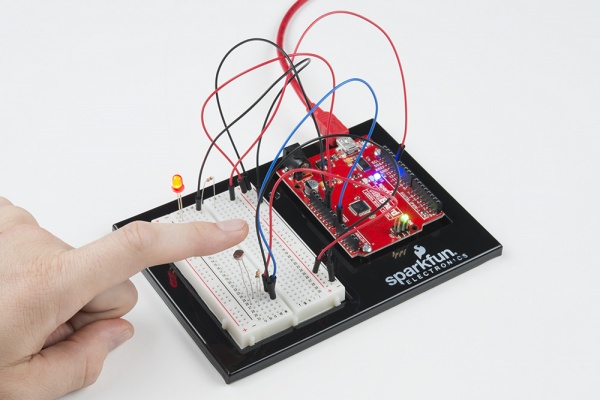So you have an idea for a project, but it requires the end product to react to the light around it...whatever will you do? Luckily there is a simple component that can be used to make this happen: a photoresistor.
What are photoresistors?

A photoresistor is a type of resistor that reacts to light. Also known as a light-dependent resistor, a photoresistor can be used to indicate the presence or absence of light and change the way a circuit behaves accordingly. Resistance through photoresistors is higher in low levels of light and lower in high levels of light.
How do photoresistors work?
This change in resistance occurs due to the material the photoresistor is made of. Electrical currents are created when electrons move within a material. As such, materials that have a high number of free electrons that can easily move around are considered good conductors. For photoresistors, materials with high resistance, aka a low level of free electrons, are used. With this high-resistance material, most electrons are locked into place. However, as light falls on the photoresistor, the light photons are absorbed, and their energy is transferred to the electrons, allowing some of them to break free and move about. This change lowers the resistance of the photoresistor and allows electricity to move more freely through it.
Project Idea

Because of this change in resistance, photoresistors are great for making projects that react to light. In the SparkFun Inventor’s Kit v4.0, circuit 1C is all about using the photoresistor that comes in the kit to create a night light!
What’s the best project you’ve seen using a photoresistor? Tell us in the comments below.



teaching tools, getting started, helpful information, What is a